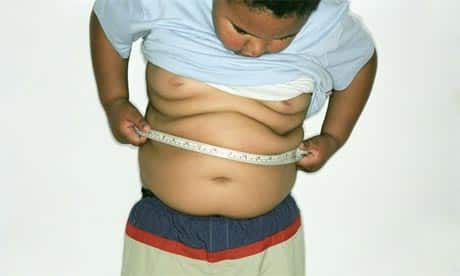-A child is considered obese when his or her weight is 10% higher than what is recommended for that age and height. (Levey)
-If no action is taken, by 2015, 75 percent of adults and nearly 24 percent of U.S. children and adolescents will be overweight or obese.  It will also become the leading preventable cause of death in the states. (John Hopkins School of Public Health)
It will also become the leading preventable cause of death in the states. (John Hopkins School of Public Health)
Statistics:
-17% of American children and adolescents (2-19) are obese today. Obesity can cause many health problems such as type 2 diabetes, high cholesterol and blood pressure to name a few. Psychological problems like depression, eating disorders, self harm, alcohol and drug abuse may also occur. Child obesity causes 300,000 deaths each year. (Cala)
-40% of Latino and African American children are overweight or obese. 50% of overweight or obese children will grow up to be overweight or obese. American children spend an average of 7.5 hours a day using entertainment media (computer games, watching TV). 25% of American children do not participate in ANY outdoor activities. (Fudin)
Social:
-Obese kids are more likely to be teased at school. They are more prone to depression, low self-esteem and nervousness than normal weight kids. The reason being bullied is such a serious issue is because 26% of bullied kids have considered suicide, and 9% have attempted it. (Levey)
-Society places a lot of emphasis on human physique now-a-days. Men should be muscular, women should be stick skinny. Obesity and fatness is considered to be unattractive. There are many stereotypical views on obese people such as that they are lazy, greedy and stupid, due to media influence. Obese people have a harder time making friends, getting jobs and being happy. This perpetuates their obesity because depression often leads to binge eating. (Faulkner) (House of Commons Health Committee) (Harvard School of Public Health) (Wells-Moran) (Reeves, Postolache and Snitker)
Economical:
147 billion USD is spent per year to deal with the obesity epidemic.
Bibliography
American Psychological Association. 30 October 2012 <http://www.apa.org/topics/children/healthy-eating.aspx>.
Cala, Alexis. Just Think. 14 April 2011. 29 October 2012 <http://justthink.org/about/childhood-obesity-in-america/?gclid=CLCw3dfBpbMCFUFU4godWiwAyw>.
Faulkner, Kevin. Missouri Western. 26 October 2012 <http://www.missouriwestern.edu/psychology/research/psy302/spring96/KevinFaulkner.html>.
Fudin, Sarah. USC Rossier. 28 September 2011. 29 October 2012 <http://mat.usc.edu/national-school-lunch-week-2011-infographic/>.
Harvard School of Public Health. 28 Oct 2012 <http://www.hsph.harvard.edu/obesity-prevention-source/obesity-consequences/health-effects/index.html>.
House of Commons Health Committee. Department of Work and Pensions. April 2008. 28 October 2012 <http://www.dwp.gov.uk/publications/specialist-guides/medical-conditions/a-z-of-medical-conditions/obesity/effects-obesity.shtml>.
John Hopkins School of Public Health. 10 July 2007. 27 October 2012 <http://www.jhsph.edu/news/news-releases/2007/wang_adult_obesity.html>.
Kurtzlebend, Danielle. US News. 18 July 2012. 30 October 2012 <http://www.usnews.com/news/articles/2012/07/18/obesity-epidemic-could-mean-fatter-investment-returns>.
Levey, Amy. Eurekalert. 1 October 2003. 26 October 2012
